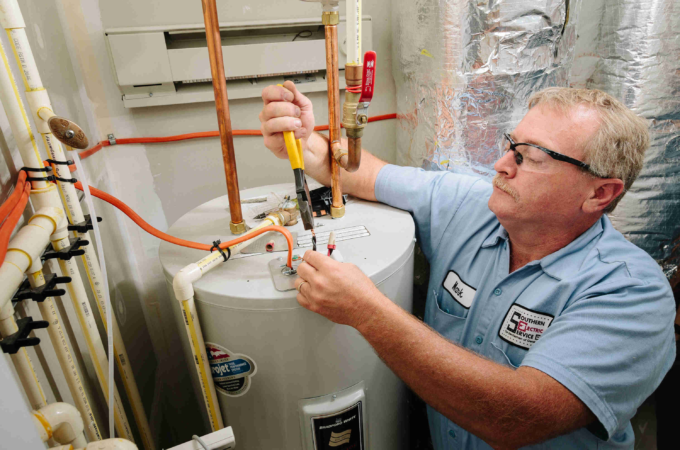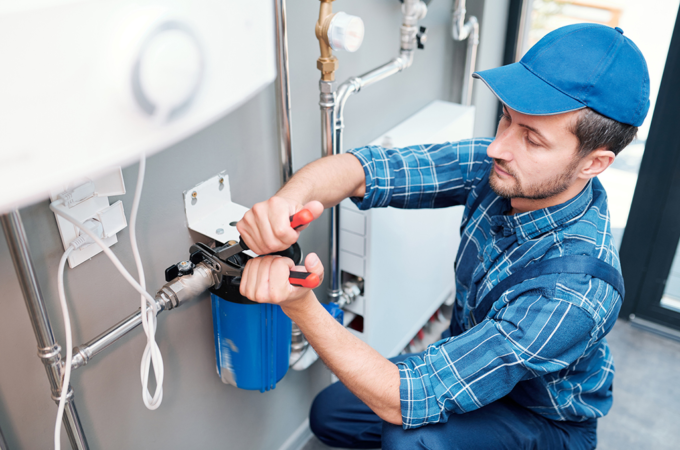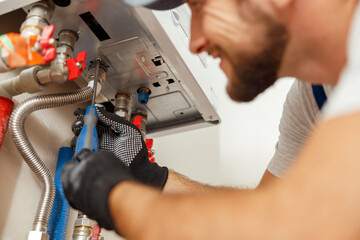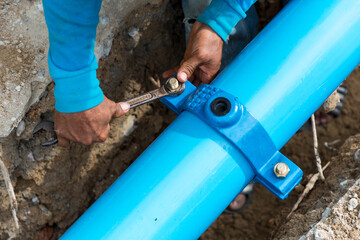Common Plumbing Repairs That You Shouldn’t Ignore
Cleveland Plumbers are important for ensuring that water flows properly through homes and businesses. They also help keep water costs down.
Some common plumbing problems include leaking pipes, low water pressure, and clogged drains. Knowing how to recognize these problems can help you decide when to call a plumber for assistance.

A leaking pipe is the homeowner’s worst nightmare. Not only does it result in water damage and higher utility bills, but if left unattended, it can lead to mildew, mold, and structural damage to your home. The first step in addressing a leaky pipe is to shut off the water supply valve. Locate the water valve near the leaking pipe, or at least the water supply line in your basement or crawl space, and turn it clockwise to stop the water flow into the leaking section of pipe.
Next, wipe down the area surrounding the leaky pipe and dry it with a cloth or towel. Doing so will prevent the patch or solution from failing due to moisture. You should also clear the area around the pipe so you can access it easily. If the leak is on a pipe that connects to a plumbing fixture, shut off the water supply valve for that specific faucet.
There are several pipe repair solutions available for homeowners to use as a temporary fix while waiting on a plumber for a permanent solution, including epoxy putty, fiberglass tape, and patch and clamp kits. When using any of these products, it’s important to read the directions carefully and select the one that matches your pipe material.
For example, a neoprene patch kit can be used to fix a small leak in a copper or PVC pipe, but you’ll need to sand down rough edges and remove any loose rust from the damaged section of pipe before applying the patch.
Likewise, you can use thread seals or silicone tape to fix a leak in a metal pipe’s threaded areas or joints. These are typically more durable than patching or duct tape, but they’ll still only provide a short-term solution.
The best option for a permanent solution to a leaking pipe is a slip coupling. These are up to code and compatible with any type of pipe, but you’ll need to purchase a coupling that’s the same diameter as your pipe. To install a slip coupling, cut out the damaged section of pipe with a pipe cutter and remove any old parts that may be stuck to the pipes. Then, slide the new coupling over the ends of the pipe and tighten it by hand to ensure a secure fit.
One of the worst things that can happen to your pipes is for them to burst. The resulting water damage can be expensive to repair and may cause mold to grow in your home, which is a health hazard. If you notice that your water pressure is low or find wet spots on your ceiling, it could be an indication that a pipe is broken.
There are several things you can do to fix a leaking pipe before calling a plumber, such as turning off the main water valve in your house and placing buckets underneath the leaking area. It’s also a good idea to keep some tools and supplies such as duct tape, plumber’s putty or epoxy in your garage or basement so that you are prepared when a pipe does break.
When a pipe does break, it’s important to shut off the water supply right away to prevent further damage and flooding. Once the water is turned off, you can start to assess the situation and make a plan for what to do next.
If the pipe is in an accessible location, such as behind a dropped wall or ceiling, it can be easy to access and replace. However, if the pipe is inside of a wall or beneath the floor, you will have to remove the affected drywall and concrete to get to it. This can be very expensive and is usually best left to a professional.
A leaking pipe inside of a wall can be difficult to find and repair, especially if it’s in an uninsulated section of the house. It’s a good idea to insulate all of your pipes before they freeze and burst, and to have a plumber inspect them regularly to prevent problems.
If you do experience a broken pipe, it’s important to call in a professional to fix the problem correctly. A plumber will be able to diagnose the issue, talk solutions with you and complete the repairs. However, there are some things you can do on your own in the meantime to minimize the damage and save time.
A clogged drain is one of the most common plumbing problems. Not only are they a major nuisance, but they can also shorten the lifespan of your waste pipes and lead to water damage in your home. Often, these issues can be fixed by a plumber using a simple plunger or snake, but other times they may require a more advanced solution.
The first thing your plumber will do is work out where the blockage is located in the drain pipe. This will determine what method they use to fix it. For example, if the clog is close to the drain entrance, they might use a closet auger or plunger. If it is further down, they might use a high-pressure water jetter to break up and remove the blockage.
Another way to fix a clogged drain is by using a homemade remedy. For example, if you have a sink drain clog, you can try pouring hot water down it. This can dissolve some of the gunk that has built up in the drain, so it should help unclog the pipe. You can also try pouring a mixture of baking soda and vinegar down the drain. This should bubble and fizz, breaking up any gunk or hair that has accumulated in the pipe. Once this has done the trick, you can simply run hot water down the drain again.
If these DIY methods don’t work, your plumber will probably have to use a drain snake or an auger to remove the clog. These flexible coils of wire’snake’ down the drain and can be particularly effective at dislodging hair and other stubborn blockages. A plumber might also opt to use a drain chemical that is safe for the pipes, but these are usually only a temporary fix.
To avoid having to call a plumber for any of these issues, it’s important to regularly clean your drains and pipes. This can be done by combining hot water with a small amount of baking soda and vinegar, or by using an all-natural product such as Bio-Clean. This is made of a natural enzyme that introduces good bacteria into your pipes, which can help prevent build-up and clogs. You can even buy this in your local hardware store.
Clogged toilets are among the most common plumbing problems. There are many reasons for them, including a build-up of debris or the presence of a foreign object. Some can be corrected by changing household habits and others may require a plumber to clean and repair the toilet and plumbing system to prevent recurring issues.
The first step in fixing a clogged toilet is to try plunging it. This simple plumbing tool can loosen blockages in both drains and toilets. If this doesn’t work, a professional plumber can use drain cleaning tools like a flanged plunger or a plumbing snake to dislodge the blockage. Chemical drain cleaners can also help, but it’s important to know that they can damage pipes over time with regular use.
Another cause of clogged toilets is excess hair. This is easy to fix by pouring boiling water or liquid dish soap down the drain. This can melt or dissolve the fat in a clog and restore proper flow.
When the clog is due to an excess of mineral build-up, a professional can flush out your drain pipes and install a water softener that will reduce the amount of minerals in your home’s water supply. This will prevent future clogs and improve the flow of your home’s water.
A clogged toilet that won’t respond to basic methods or chemical cleaners could indicate a larger issue in your sewer line. A professional plumber can conduct a camera inspection to determine the cause of the problem and recommend the best way to fix it.
If you live in an older home with iron piping, it’s likely that the pipes will develop a thin coating of scale that can restrict flow and cause leaks. A professional plumber can install a pipe lining system designed specifically for iron piping to prevent this issue and improve the longevity of your pipes. This is a long-term solution that can save you money in the long run by reducing water consumption and lowering your energy bills.




